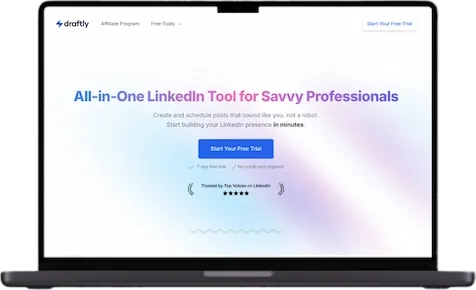SaaS Product Development Lifecycle and Best Practices
Are you planning to build a SaaS application but unsure where to start?
Or maybe you’re already in the development phase and want to ensure you're on the right track?
Whether you’re an entrepreneur, product manager, or startup founder/co-founder, understanding the SaaS development life cycle is key to building a successful, scalable product.
Spend just 12 minutes reading this article, and you'll gain a clear understanding of the essential stages of SaaS development.
This guide will walk you through everything from idea validation to deployment and continuous improvement.
You’ll also discover best practices to avoid common pitfalls, optimize performance, and ensure your SaaS product evolves with your users' needs.
Why read this article?
Software as a Service (SaaS) is reshaping the software industry, making applications more accessible and efficient.
Instead of downloading and installing programs, users simply log in and start working. This cloud-based model is why SaaS adoption is skyrocketing, with the industry expected to reach $307.3 billion by 2026.
If you want to build a SaaS product that stands out, you need more than just a great idea. You will require a structured development process that ensures scalability, continuous improvement, and cost efficiency.
In the coming sections, we’ll explore:
The key stages of the SaaS app development life cycle
Best practices for building a successful SaaS application
Common challenges in SaaS development—and how to overcome them
Let’s dive in!
What is a SaaS Product?
A SaaS product is a cloud-based software application that users can access via the internet without installing it on their devices. In your daily life, you may already be using at least one SaaS app—that’s how influential SaaS applications have become.
Some well-known SaaS applications you might use include Google Workspace for document collaboration, Zoom for video conferencing, Netflix for streaming entertainment, Slack for team communication, and Shopify for online store management.
These cloud-based solutions simplify tasks without requiring installation, making them essential in everyday life.
Now, let’s move on to our main topic: What is the SaaS development life cycle for web, mobile or AI app?
5 Key Stages of the SaaS Development Life Cycle (SDLC)
Building a successful SaaS product is like assembling a car. You need a solid blueprint, the right parts, and regular maintenance to keep it running smoothly. Skip a step, and you might end up with a vehicle that breaks down before it even hits the road.
Here’s how you can build a SaaS product in 5 steps that runs efficiently from day one:
- Ideation and Planning Stage
- Design Stage
- Development Stage
- Testing Stage
- Deployment Stage
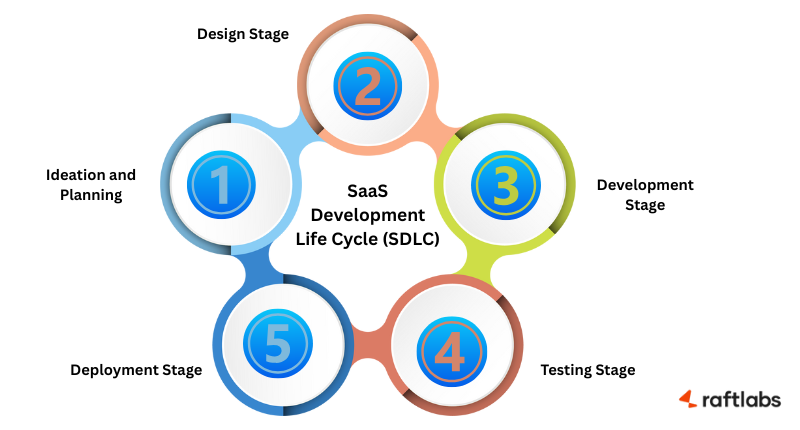
1. Ideation and Planning
You might have a great SaaS idea in mind. But unfortunately, not all ideas turn into successful products, which is why this step is crucial.
This stage focuses on refining your concept and setting a solid foundation to build a scalable, market-ready SaaS web, mobile, or AI app.
Here are the three steps you should take in this stage.
Idea Generation & Validation
Market Research
Business Strategy
Idea Generation & Validation: Think about the real-world problems your users may be facing and brainstorm potential solutions you can provide by building a SaaS app. Also, try to validate your SaaS idea through surveys, feedback, and competitor analysis.
Market Research: One of the main tasks before you step into the SaaS app development process is identifying your target audience. Their age group, demographics, etc., help determine the nature of your SaaS product. Even the color of your website should be influenced by these factors.
For example, if your SaaS app targets young professionals, a sleek and modern design with blue or green tones (which convey trust and productivity) might work well.
On the other hand, if your audience includes creative individuals like designers or artists, a more vibrant color scheme with bold accents could be more appealing.
Business Strategy: Try to have a strong strategy with a clear timeline and practical goals. Define your short-term and long-term objectives. Also, have a clear idea about the revenue model, pricing strategy, and growth plans you want to follow for your app.
Having clarity on these factors from the beginning helps you move quickly through the app development process.
Otherwise, you may have to keep changing features and rebuilding your app, which can cost you time, money, and resources.
2. Design Stage
Designing your app in a way that users will love can sometimes be quite challenging.
People's mindsets are changing rapidly. Over the last seven years, we have developed several SaaS apps, and from our experience, users are usually seeking simplicity.
They want the app to give them what they need in just a few clicks. They appreciate easy navigation and the ability to find what they are looking for without much effort.
If you are working with an expert SaaS product development team, they can guide you through below key steps to ensure your app meets user expectations:
UI/UX Design: They focus on creating a seamless user experience with a clean, user-friendly interface that enhances usability.
Prototyping: By developing wireframes and interactive prototypes, they help test functionality early on. This allows for gathering feedback and making improvements before full-scale development.
This way, you can refine and optimize your SaaS app to produce the best version before it hits the market.
3. Development Stage
Now that you have a great design ready, you are all set to start building your dream SaaS app. The development stage will be in safe hands if you have an expert SaaS development team.
Also, don’t forget to choose the right technology, as it is crucial for developing your SaaS app with the right features, staying within budget, and allowing room for future growth.
Building the Team
A successful SaaS product development journey requires assembling the right technical experts. Your team should include:
Product Managers (PMs) to oversee development, align features with business goals, and ensure timely execution.
Backend developers to build a secure and scalable server-side architecture.
Frontend developers to create an intuitive user interface.
QA engineers to test for bugs and optimize performance.
Technology Stack Selection
The right technology stack directly impacts your SaaS product’s scalability, performance, and security.
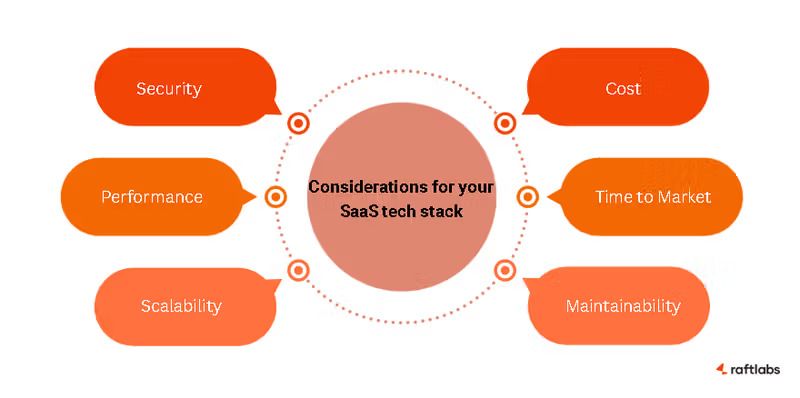
Consider factors such as:
Programming languages & frameworks – Node.js, Python, or Ruby on Rails for the backend; React.js or Vue.js for the frontend.
Cloud infrastructure – AWS, Google Cloud, or Azure for hosting and storage.
Database management – SQL databases (PostgreSQL, MySQL) or NoSQL solutions (MongoDB), depending on your data structure.
Security protocols – Implementing encryption, authentication, and compliance measures to protect user data.
By making strategic technology choices, you can avoid unnecessary technical debt and ensure your SaaS product remains flexible for future updates.
With the right team and technology stack, you’re well on your way to developing a high-performing SaaS product.
The next step is the testing phase that ensures your application is market-ready and delivers a seamless experience to users.
Also Read: Cost of Building a SaaS Product
4. Testing Stage
Now that your SaaS web, mobile or AI app is built, it’s time for thorough testing. You don’t want users facing bugs or frustrating glitches.
This is where quality assurance (QA) plays a crucial role in ensuring everything works flawlessly. It ensures your product runs smoothly, functions as expected, and delivers a great experience.
Here is a small checklist for you to tick and make sure your app is ready for launch:
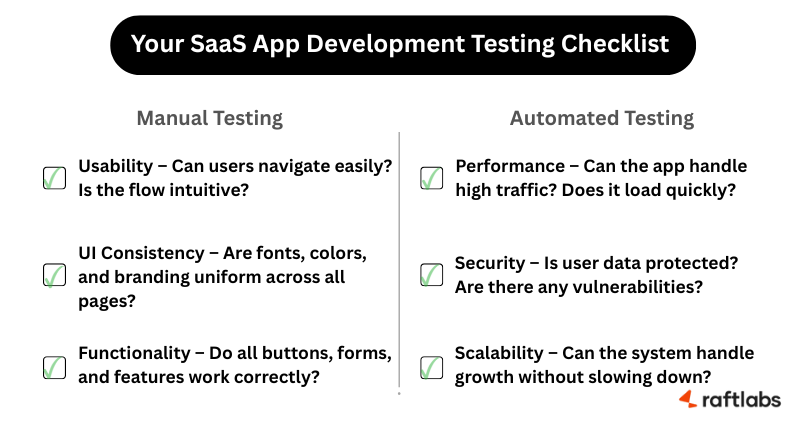
Manual Testing
This step involves real people (like you or your testers) using the app just like your users would. The goal is to ensure everything looks and works as it should.
Three things you must look for in manual testing are
1. Usability Testing
2. UI Consistency
3. Functionality Testing
Usability Testing – Users should navigate easily. Buttons must be where they naturally expect them, and the overall flow should feel intuitive. Check whether your SaaS app meets the following requirements:
Check if menus, forms, and actions follow a logical structure.
Ensure users don’t need extra effort to figure things out.
UI Consistency – Fonts, colors, and design elements should match across all pages.
Branding must remain uniform throughout the app.
Buttons, headers, and layouts should maintain a consistent style.
Functionality Testing – Every button must take users to the right page. Forms should submit correctly, and all features must work as expected. Check whether your SaaS app meets the following requirements:
Click every button to verify proper functionality.
Fill out forms to check if data saves correctly without errors.
Test key features to confirm they deliver what was promised.
Automated Testing
Some tests take too long to do manually. That’s where automation tools come in. They run tests faster, identify hidden issues, and help ensure your app is ready for real users.
Three things you must look for in Automated testing are
1. Performance Testing
2. Security Testing
3. Scalability Testing
Performance Testing – Your app needs to be fast and responsive, even under heavy traffic. Check whether your SaaS app meets the following requirements:
Does the app slow down when multiple users log in?
Can it handle high data loads without crashing?
Does it perform well on different devices and networks?
Security Testing – Protecting user data is crucial. Automated tools help detect vulnerabilities before hackers find them. Check whether your SaaS app meets the following requirements:
Are passwords and personal data stored securely?
Can unauthorized users access sensitive areas?
Are security protocols strong enough to prevent breaches?
Scalability Testing – A growing user base shouldn’t break your app. Testing on different servers helps prevent future issues. Check whether your SaaS app meets the following requirements:
Will the app crash if thousands of users sign in at once?
Can the system scale smoothly as demand increases?
Are there any weak points that could slow things down?
Testing may not be the most exciting step, but it’s one of the most important. A fast, secure, and scalable app keeps users happy and sets your SaaS product apart from the rest.
Once testing is complete, the next step is deployment—where your SaaS product finally goes live and starts making an impact.
5. Deployment Stage
After extensive testing and refinements, it's finally time to launch your SaaS web, mobile, or AI app.
But a successful launch is more than just making the product live—it requires a well-planned strategy to ensure smooth adoption, minimize risks, and create momentum.
Key SaaS App Launching Strategies
1. Smart Marketing
A strong marketing strategy helps attract the right audience and generate interest before and after launch.
Join SaaS Communities – Platforms like Indie Hackers, SaaStr, and Product Hunt can help you learn from successful founders and get early adopters.
Leverage AI Tools – Use AI-powered marketing solutions for personalized campaigns, automated email sequences, and audience segmentation.
Analyze Past Launches – Study what worked for similar SaaS product development companies to refine your approach.
2. Build a Community
Creating a loyal community around your SaaS product fosters long-term engagement and advocacy.
Engage on Industry Platforms – Participate in LinkedIn and Reddit discussions where your target users are active.
Offer Value, Not Just Promotion – Share insights, case studies, and problem-solving content instead of just advertising your app.
Host Live Demos & Webinars – Interactive sessions help showcase your product’s capabilities and address user concerns in real time.
3. Launch with Impact
A structured rollout ensures that your app performs well under real-world conditions and gains maximum visibility.
Have a Dedicated Support Team – Provide quick assistance for early adopters to build trust and improve retention.
Monitor Performance Closely – Use analytics to track user behavior, identify bottlenecks, and make necessary adjustments.
Announce Your Launch Across Multiple Channels – Utilize social media, email campaigns, partnerships, and SaaS directories to maximize reach.
A well-executed launch positions your app for growth and helps establish credibility in a competitive SaaS market.
Best Practices for SaaS Development
Building a great SaaS product requires efficiency, scalability, user focus, and strong security.
There are a few best SaaS Website practices you need to take care while building your SaaS product.
Here is how to get it right.
Automate Everything You Can
Manual work slows you down. Automation improves accuracy and keeps things running smoothly.
Use AI-powered chatbots for customer support, automate email campaigns to engage users, and set up performance tracking to catch issues early.
The less you have to manage manually, the more you can focus on growth.
Multi-Tenant Architecture for Scalability
Scaling should not drain resources. A multi-tenant setup allows multiple customers to use the same system while keeping their data separate.
It lowers costs, simplifies maintenance, and ensures updates reach all users instantly. This approach makes it easier to expand as your customer base grows.
Listen to Your Users
Your users know what they want. Pay attention to their feedback to improve your product. In-app surveys help you understand their needs.
Analyzing user behavior shows where they struggle. Support tickets and reviews highlight common pain points. A SaaS that evolves with real user input stays relevant.
Stay Agile and Adaptable
The SaaS industry moves fast. You need to be flexible and ready to adapt. Short development cycles allow you to test, gather feedback, and improve quickly.
Collaboration between developers, designers, and stakeholders keeps your product aligned with user expectations. Fast decision-making helps you stay ahead of market trends.
Security and Compliance Are Essential
Users trust you with their data, and you must protect it. Encrypt sensitive information to keep it secure. Restrict access to critical data based on user roles.
Follow industry regulations like GDPR, HIPAA, and SOC 2 to stay compliant. A strong security foundation prevents breaches and builds customer confidence.
A well-built SaaS product is efficient, scalable, and secure. Following best practices ensures a smooth foundation, but the real test comes when challenges arise.
Understanding these challenges and knowing how to navigate them is key to long-term success.
Partnering with an experienced SaaS product development company can help streamline the process, ensuring a smooth, scalable, and future-proof solution.
Common Challenges in SaaS Development
Running a SaaS business is like running a never-ending marathon. Just when you think you’ve hit your stride, something new pops up—scalability issues, security risks, or unexpected integration headaches.
But with the right strategies, you can tackle these hurdles and build a product that stands out.
Scalability Issues
SaaS applications must handle growing user bases without slowing down or crashing. Poor scalability can lead to downtime, frustrating users and affecting revenue.
A microservices architecture helps distribute workloads efficiently. Cloud platforms like AWS or Azure offer dynamic resource allocation, while load balancing ensures traffic is spread evenly.
Data Security and Compliance
Security is a major concern. In 2024, the global average cost of a data breach reached $4.88 million, marking a 10% increase over the previous year—the highest ever recorded.
For SaaS businesses handling sensitive user data, a single breach can lead to severe financial and reputational damage.
SaaS platforms store sensitive data, making them prime targets for cyberattacks. Compliance with regulations like GDPR and HIPAA is crucial.
Security measures such as encryption, two-factor authentication, and regular security audits help protect user information. Staying updated on evolving regulations ensures continued compliance.
Integration Complexity
Connecting third-party services can be challenging due to API compatibility issues. Without seamless integration, the user experience suffers.
Using standardized APIs like REST or GraphQL makes integrations smoother. Clear documentation and API gateways simplify the process for developers.
User Experience and Performance
Forrester reports that 84% of businesses that enhance customer experience (CX) see increased revenue. For SaaS applications, a slow or clunky interface can drive users away.
To retain customers, platforms must offer responsive design, intuitive navigation, and seamless performance across devices.
Regular usability testing, caching, and content delivery networks (CDNs) help maintain speed and reliability, ensuring a smooth user experience.
Subscription Lifecycle Management
Managing free trials, upgrades, and cancellations can be complex. Manual processes increase errors and disrupt the customer experience.
Automated subscription management tools ensure smooth billing, access control, and plan transitions.
Cost Management
Development and maintenance costs can quickly add up, especially when dealing with legacy systems. Focusing on customer retention and increasing Average Revenue Per User (ARPU) helps maintain profitability.
Starting with a Minimum Viable Product (MVP) reduces initial costs while validating market demand.
SaaS businesses can stay ahead by adopting the above SaaS development cycle strategy. Thorough planning can go a long way in helping you experience a smooth SaaS product development journey.
SaaS Development Apps Built by RaftLabs
At RaftLabs, we have built a variety of SaaS applications that cater to different industries, ensuring scalability, efficiency, and innovation.
Here are some of the key SaaS apps we’ve developed for our clients:
PDC Remote Care
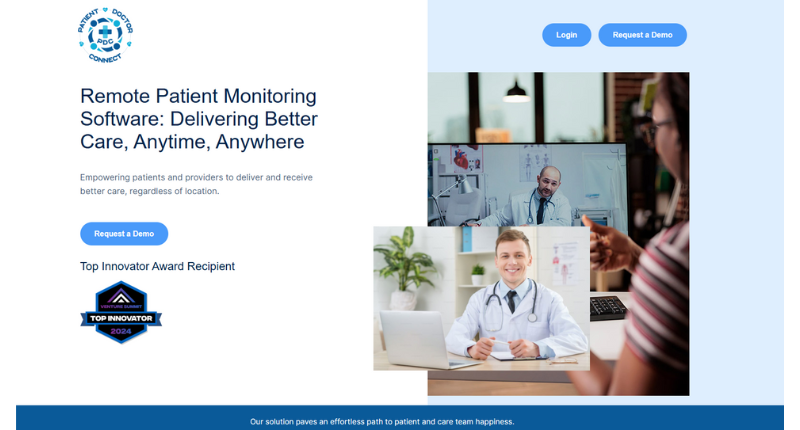
A cutting-edge remote patient monitoring platform that integrates AI-driven insights for better patient outcomes. It provides real-time monitoring and personalized care recommendations, reducing healthcare costs while improving response times.
PSi (People Supported Intelligence)
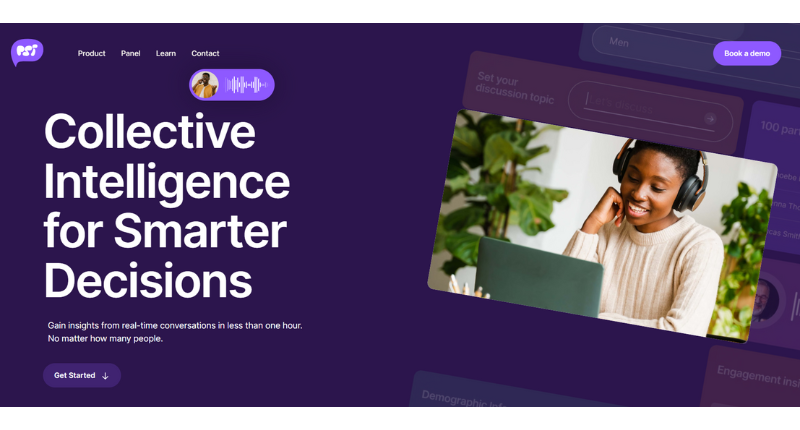
An AI-powered web application that analyzes large-scale conversations to enhance decision-making. It helps organizations gather real-time insights, improve participation, and generate actionable recommendations for complex discussions.
Perceptional
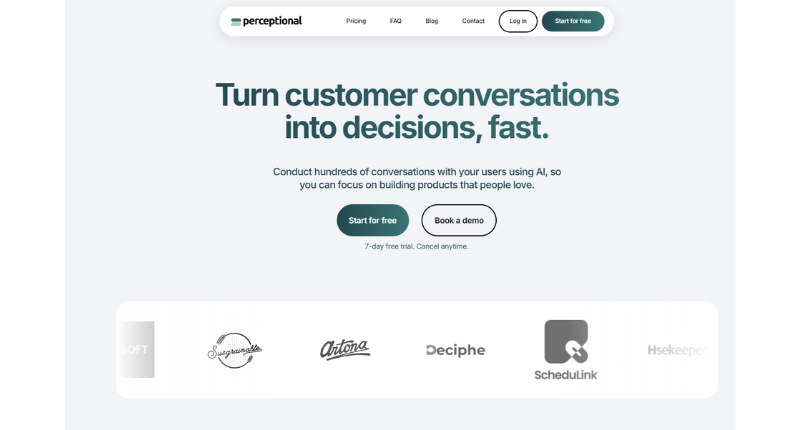
A user research platform that leverages AI-powered chat interviews to collect in-depth insights. It generates automated follow-up questions, making qualitative research more efficient and precise.
SEKOU
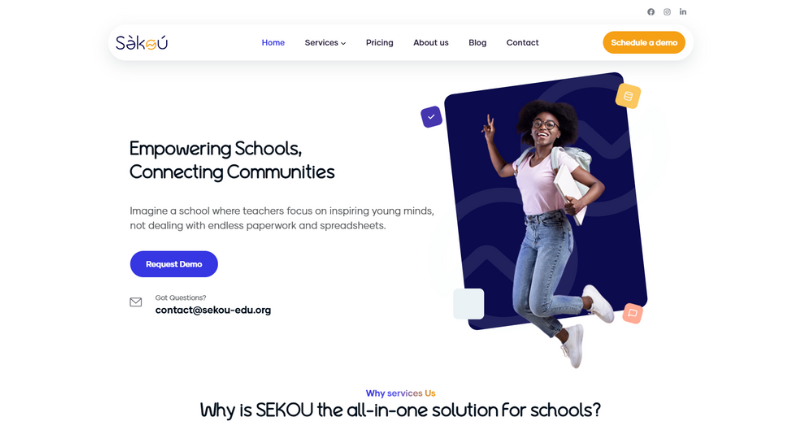
A multilingual learning management system (LMS) designed for K-12 schools. It streamlines administration, enhances communication between educators and parents, and personalizes learning experiences for students.
Conclusion
Building a successful SaaS product takes careful planning, the right tools, and a focus on users.
Every step matters, from idea and market research to development, security, and scaling. Using agile methods, strong security, and regular improvements helps create a scalable and high-performing product.
The SaaS industry is rapidly evolving, driven by AI, automation, and the demand for personalized experiences.
Businesses are leveraging AI-driven insights to enhance user engagement, while low-code/no-code platforms are simplifying development, making it easier to bring new products to market.
At the same time, increasing security regulations are pushing companies to prioritize compliance. To stay competitive, businesses must embrace these advancements, ensuring their SaaS solutions are both innovative and secure.
Custom SaaS development offers greater flexibility, scalability, and security, ensuring that businesses get a solution that meets their unique needs.
If you're looking to build a SaaS application, partnering with a SaaS product development company can help bring your vision to life.
Frequently Asked Questions
What is a SaaS product?
A SaaS (Software as a Service) product is a cloud-based software solution that users can access over the internet without needing to install or maintain it on their devices. These products are typically subscription-based and hosted by the provider, ensuring automatic updates, security, and scalability. Examples include project management tools, CRM software, and collaboration platforms.
What is the SaaS product lifecycle?
The SaaS product lifecycle is the process a software-as-a-service product goes through from its initial idea to growth and eventual maturity or decline. It typically includes stages like ideation, development, launch, growth, maturity, and renewal or sunset. Each phase requires different strategies to ensure continuous success.
Why is strategy planning important in the SaaS product lifecycle?
Strategic planning helps align product development with market needs, ensuring smooth growth and long-term success. It helps in identifying the right target audience, setting clear goals, managing resources efficiently, and adapting to changing user demands. Without a solid strategy, a SaaS product risks poor adoption and high churn rates.
How long does it typically take to move through the SaaS product lifecycle?
The timeline varies based on factors like product complexity, market demand, and competition. Typically, launching an MVP (Minimum Viable Product) can take a few months, while scaling and reaching maturity may take several years. Continuous updates and innovation help extend the lifecycle and maintain relevance. At RaftLabs, we build MVPs within 6-8 weeks. Visit our pricing page for more details.
How can I ensure the success of my SaaS product throughout its lifecycle?
Success comes from understanding customer needs, providing regular updates, ensuring a seamless user experience, and maintaining strong customer support. Investing in marketing, analyzing user feedback, and staying ahead of industry trends also play a crucial role. A data-driven approach helps optimize performance at each stage.
Insights from our team
Ready to build
something amazing?
With experience in product development across 24+ industries, share your plans,
and let's discuss the way forward.

